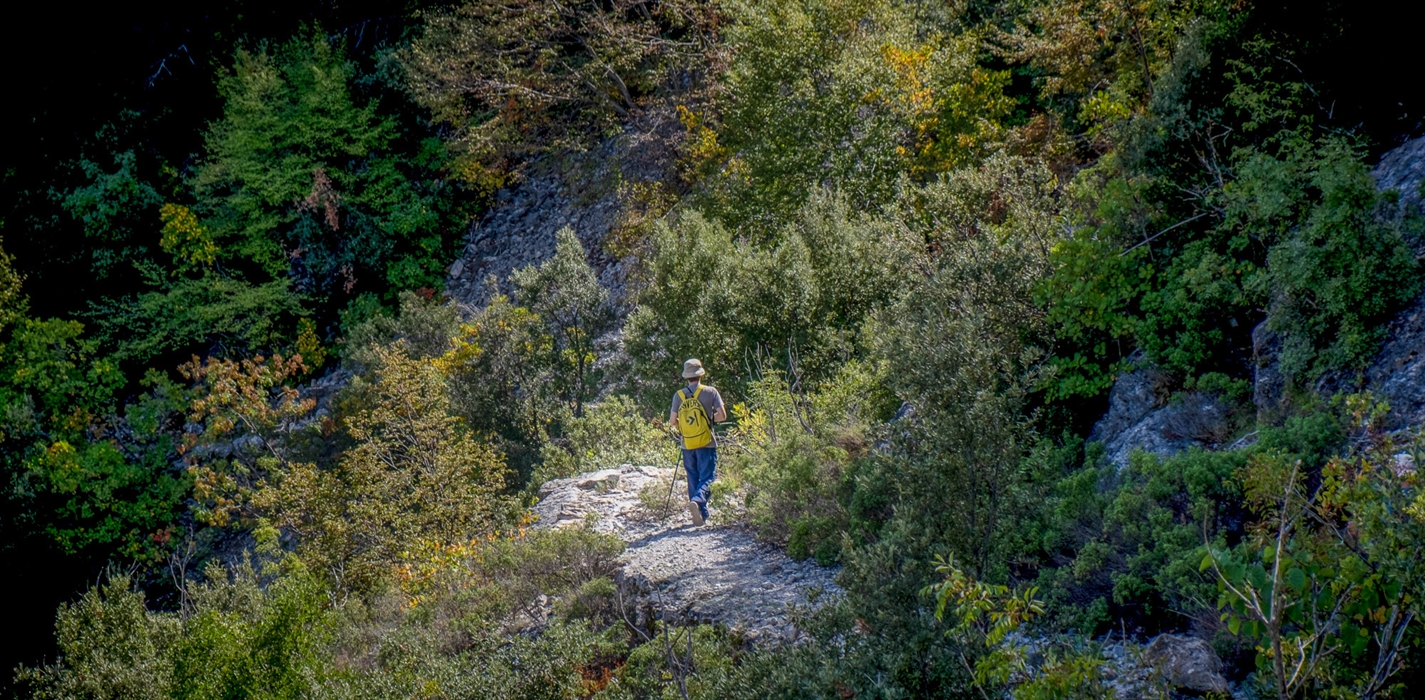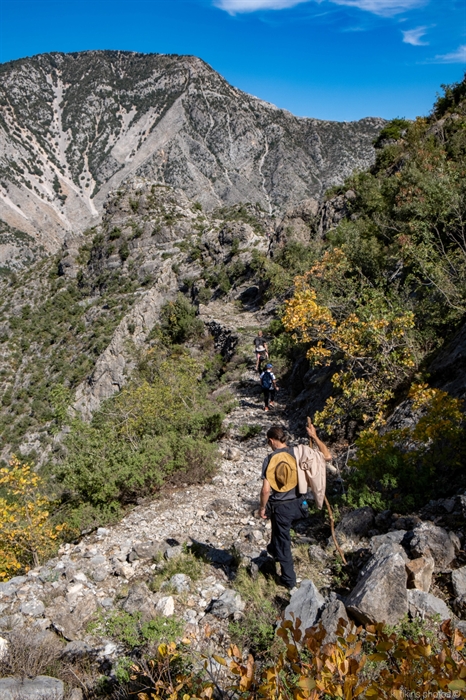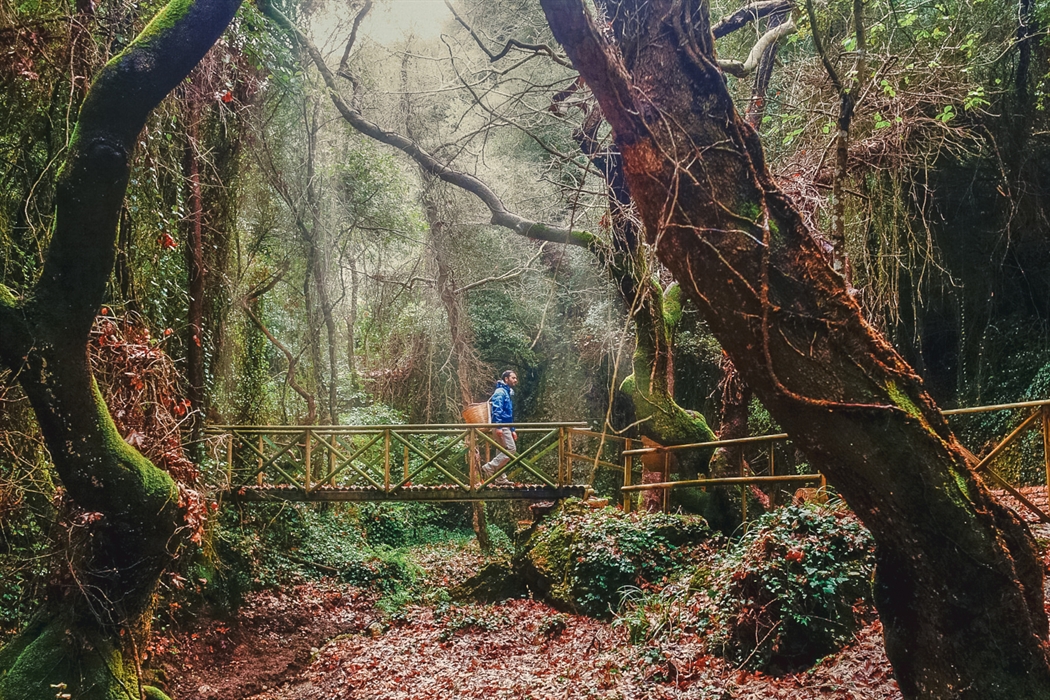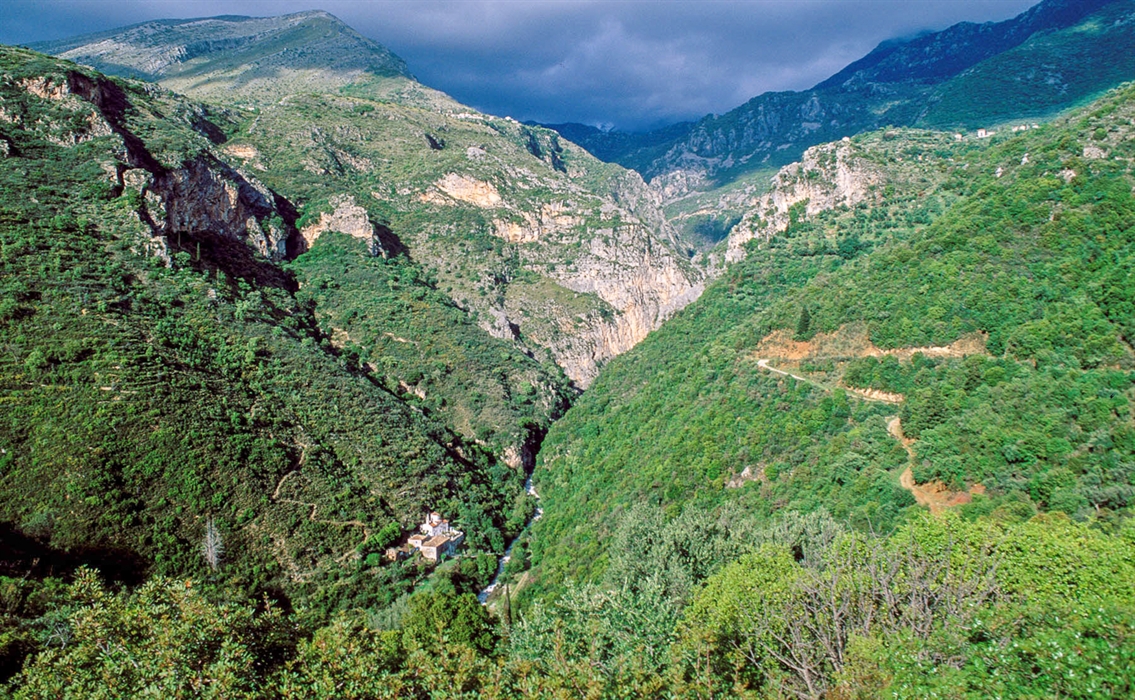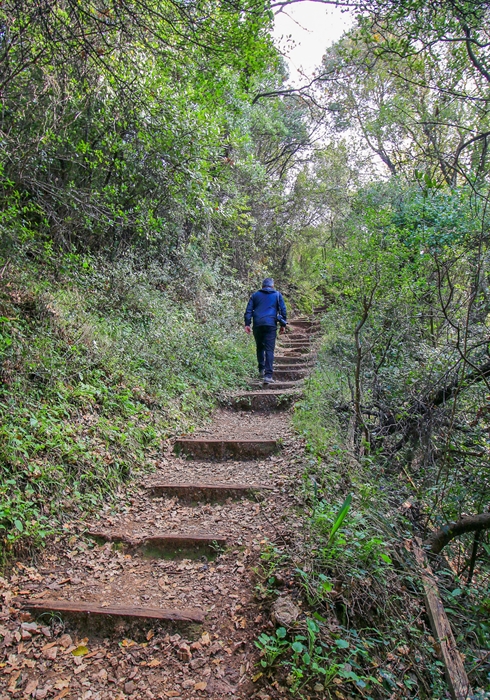The Taygetus gorges in Messinia
Messinian Mani has a large network of paths for walkers of all ages and abilities. The most popular and impressive gorges in the Taygetus area are Vyros, Ridomo and Foneas.
Messinian Mani has a large network of footpaths for walkers of all ages and abilities. These are a major draw for visitors from all over the world as you can follow old cobbled paths, or maybe combine a dose of culture with a short walk, and more experienced climbers can head for the peaks.
ut even amongst this wealth of walks, the Taygetus gorges are something special. There are three gorge walks in the area, Vyros, Ridomo (also called Kaskaraga or Koskaraka) and Foneas (also called Nupantis). Walking through them is an excellent way to get to know the wild landscapes of Mani and feel closer to the people and their history.
The Vyros gorge. The second largest gorge in Taygetus, and the most historic route, is on the western side of the mountain and is about 20 km long. It is one of the most impressive gorge walks in Greece. Starting from the forest of Vasiliki, it ends at the Messinian gulf, at the entrance to Kardamyli.
In ancient times this gorge was called the "Royal Road" as it connected Sparta with its port, Kardamyli. But even up to more recent times, in fact in the 1980s, the Vyros gorge paths were the only way villagers could get from Exochori to Tseria.
The easiest walking route is from Tseria to Kardamyli (or vice versa). It is a beautiful walk though green countryside covered with pines, cedars, cypresses and black pines. You can take a small detour to see the Sotiros Monastery which was built in the 14th century and was renovated in 1807. This route ends at Kardamyli.
There is another more difficult route suggested by The Kalamata Mountaineers Association which starts at the dense Vasiliki forest and continues under the towering cliff walls of the gorge. It is an impressive walk - but should only be tackled by experienced mountain walkers who are in a good physical condition and who are carrying all the right equipment. Most of the route is on the canyon floor, which means scrambling over stones of all shapes and sizes. Nevertheless, it is one of the most beautiful hikes in Taygetus.
Route length: 12 km, duration up to 5.30 hours with stops, altitude difference 1020 m.
The Ridοmo gorge. It makes for some stunning, if not particularly easy, hiking. And it’s certainly not for anyone who suffers from claustrophobia as at points the narrow path winds between huge cliffs. The gorge begins in Neraidovuna, way up at 2031m above sea level and passes near the villages of Pigadia, Kentro Gaitso and Doloi to end up at the coast in the village of Kitries, east of Kalamata. It takes about two days to do the full hike, from the start down to the sea. Somewhat confusingly, the higher part is known as the Ridomo gorge while the lower part that leads to the sea is called the Koskaraga gorge.
There are plenty of geological phenomena to look at on the way, especially the almost vertical cliff walls and the twists and turns of the colourful rocks. Some sections, like those around Pigadia and Altomira, follow well-made cobblestone paths. There are natural passageways into the gorge at Gaitses and at Koskarakas with its beautiful bridge on the old Kalamata-Kambos road.
Several hikes are organized and one of most interesting is almost 8.5 km and takes about 4 hours with stops. It is a demanding hike, with altitude differences of 730-1060 m. The starting point is the almost uninhabited village of Pigadia in the heart of Taygetus mountain (26 km east of Kalamata) and from there, a cobblestone path parallel to a ravine leads to the Pigadiotiko bridge and then continues inside the gorge. Higher up, three large streams join together at Klima, by the chapel of Panagia Kapsodematousa. You pass the Ridomo settlement which in days gone by was only accessible from the gorge! However, there is now a rough dirt road to the settlement which was only inhabited in the summers by a few families of livestock farmers.
The only access to Pigadia is along a dirt track.
The best time to go walking in the gorge is late spring or early summer.
The Foneas gorge. Locals call it Noupanti gorge. It is a wonderful place to explore, but make sure you are properly equipped and go at the right time of year (see info below). It begins in Western Taygetus and ends at Foneas Beach, between Stoupa and Kardamyli. Although the gorge itself begins at the Vaidenitsa Monastery (3 km from the village of Saidona), it is better to start your walk from Saidona, or Proastio, as there are occasionally landslides further up. However, if you begin your day by visiting the monastery of Vaidenitsa and then go back down to one of the villages in your car, you will get a stunning view of the gorge before you set out on your walk. Kitriniaris Tower and the Samuil Monastery are also close by and you will see that all three are fortified as, combined with the mountainous terrain, they were a vital defence for the people who lived in the villages around them.
In the old days, the gorge was a bustling thoroughfare as its well-made path was the main connection between the villages of Saidona, Exochorio and Proastio.
There is a single arched 25 m stone bridge over the gorge near Proastio which was built in the 1930s as part of the road built to connect Proastio with Kastania and Saidona.
See info on the Kitriniaris tower and the Samuil monastery.
Did you know that
The beginning of the trail is an old cobblestone path. If you do the entire 8 km route it will take you 5.30-6.30 hours.
Be sure you have the right equipment for trekking (including climbing ropes) as the walk is difficult in some parts.
You can do the walk early in the morning (if it's summer), and in autumn. Beware of sudden showers as the water level can rise sharply.
The gorge’s exit to the sea is called Foneus (murderer) because several people and animals drowned attempting to cross the stream when the water was in full slate. (See information about Foneas beach).
Location
Find the destination on the interactive map below.
Weather
Σχετικό περιεχόμενο χρηστών (UGC)
Ενημερωθείτε για ενδιαφέροντα θέματα γύρω από τον προορισμό μέσα από το περιεχόμενο των χρηστών μας
Discover 7 hidden gems of the Peloponnese
Many of you may have already visited some of the most renowned attractions…
TOP 10 archaeological museums in the Peloponnese
Olympia, Mycenae, Epidaurus, Diros Cave, Ancient Corinth, Messene and…
TOP 10 Castles in the Peloponnese
Castles galore! Mystras, Monemvasia, Palamidi, Methoni, Koroni,…
Newsletters
- About us
- FAQ's
- Map
- Tourism information centers
- Disclaimer
- Sitemap
- Our brand
- Media roum
- Adding your bussiness
- Corporate
- MICE

Peloponnese. Greece beyond the obvious





Design and creation from Cosmote
Marinas and Moorings
Diving centers
Get inspired
- Media gallery
- Blog
- The Peloponnese in the media
- Your feedback
- Users' general content
- Users' local products
- Users' events content
- Ask a local
More
- Accommodation
- Travel agencies
- Restaurants
- Services
- Destinations Map
- Weather
- Public transport
- Events
- Frequently asked questions
- Useful phones
- B2B
- Destination Data
- Contact

